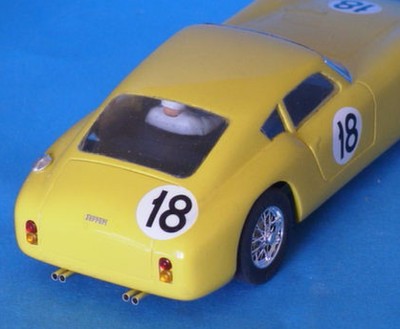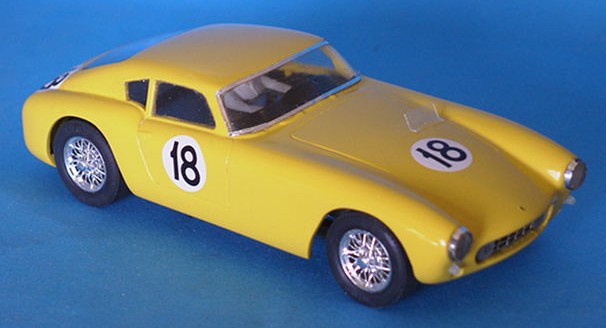
 |
| Ferrari 250 GT lwb by Joel Thura |
|
||
|
Only
7 of the real car where build in 1957, the design is by Pinifarina and
the shape was later used to create the famous 250GT swb. I think it is
the most stunning of all the front engined Ferraris, only the recent 550
Maranello comes close to capturing the agressive yet elegant shape of
this car.
|
|||
|
Another long term project (about 2 years on and off). The model is based on an old damaged Scalextric 250 GT, that I managed to buy cheaply. As you may have guessed, lwb stands for long wheel base. The bodyshell was cut in three using a mitre box and an Xacto modeling saw, one cut across the bonnet just in front of the windscreen, the other at the back of the roof just in front of the rear window. I glued some card inserts in the gaps, 5mm at the front and 6mm at the rear and reglued the car back together, not forgetting to cut out the small side window. The Scalextric chassis was then cut in 5, the front part for the nose, the rear valence and sides were glued to the body to achieve the correct depth and shape, the centre section was discarded. The bonnet air intake and side vents were sanded down and filled in. After the whole car was finished and primed, disaster struck, whilst gluing the car back together, the body had got twisted. The project was left for a while whilst I figured out what to do next. The twisting was caused by damage to the roof present when I bought the car, although repaired, it twisted the body during the extensive surgery involved in the conversion. I tried the old trick of warming it up and twisting in the other direction, I tried to dismantle it, but it just would'nt come apart without major damage. For a long time I thought the whole thing would have to be scrapped, I knew it was a mistake to use that body, especially as I had bought another one just before starting the project.
The wheels are Ninco, and so is the driver. All the glazing is made of thin clear plastic, trimmed to size, mounted virtually flush and glued with PVA. The detail work includes photoetched grill and badges, thin metal tube exhausts, bar metal foil, not forgeting the perspex fly screen on the bonnet. I would not recommend this particular modification to anyone unless they are totally mad (best to wait until I recast it in resin). |
|||

The pictures on this page were taken by David Lawson |
|||
 |
|||